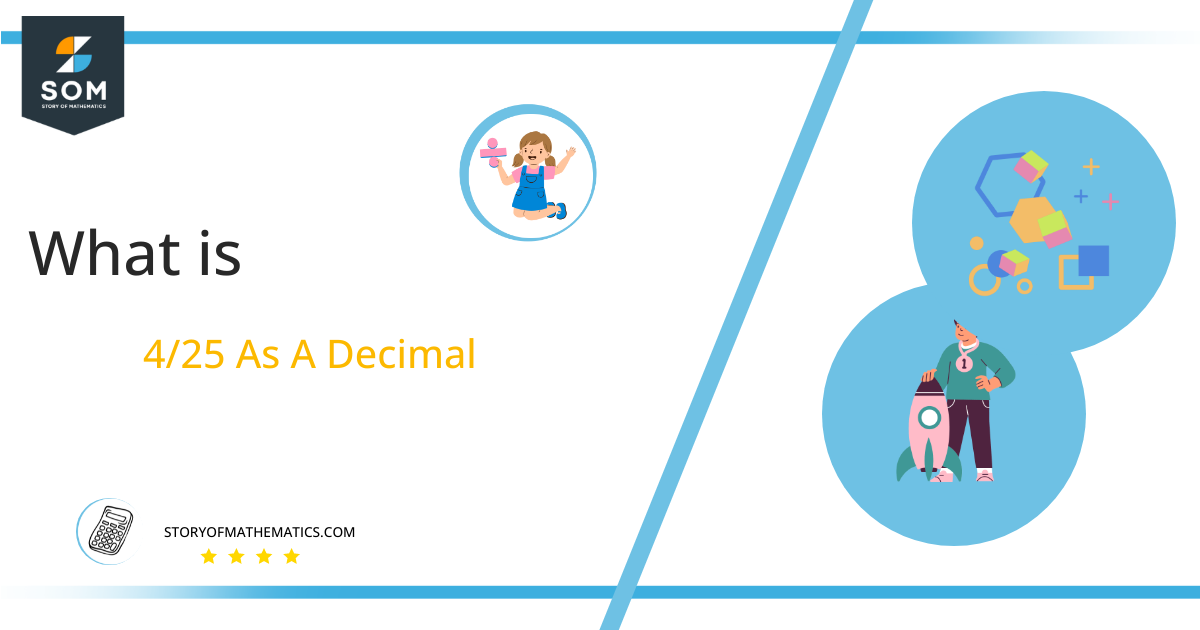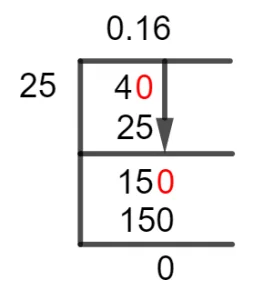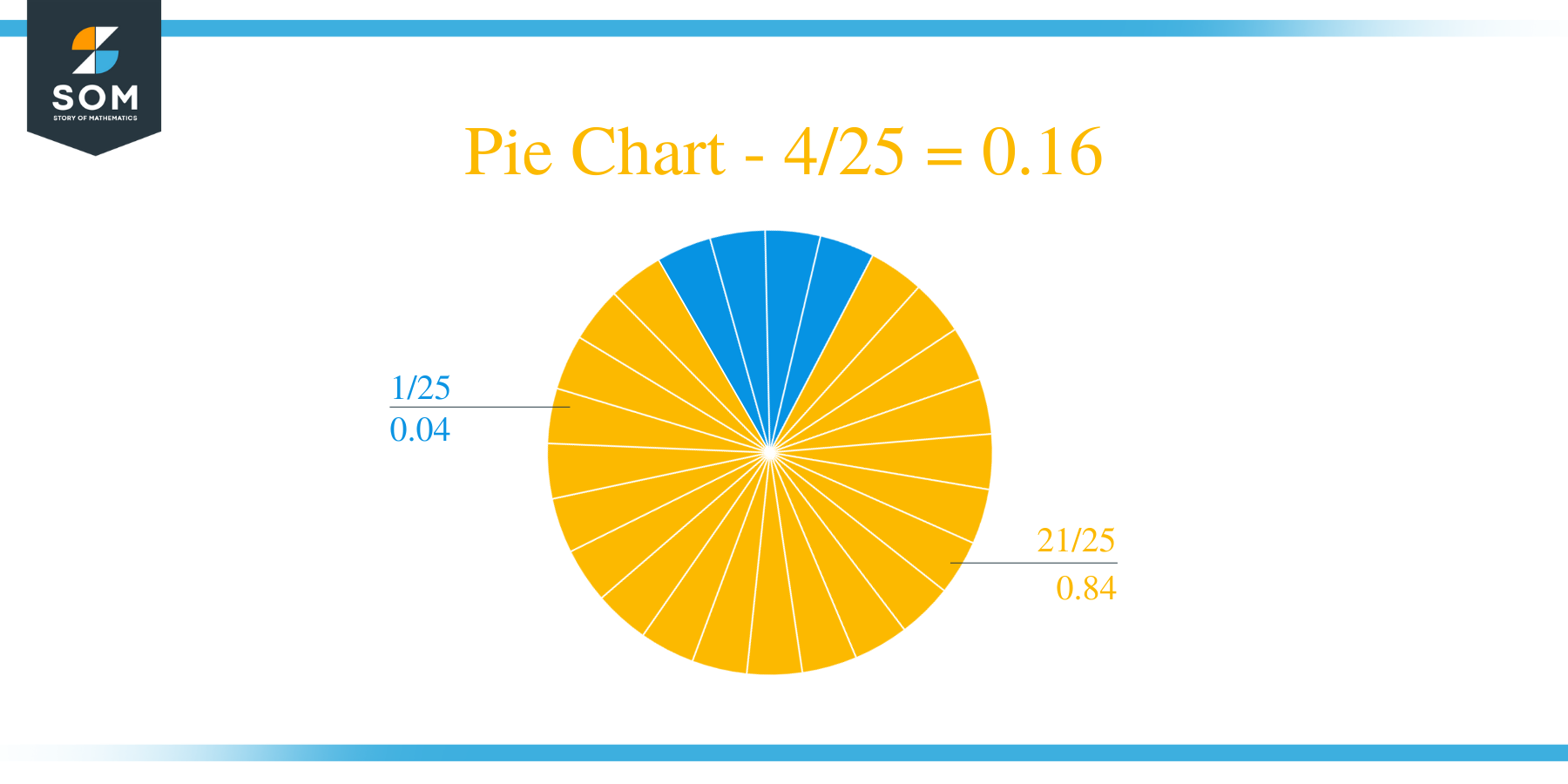What Is 4/25 as a Decimal + Solution With Free Steps
 The fraction 4/25 as a decimal is equal to 0.16.
The fraction 4/25 as a decimal is equal to 0.16.
Fractions are something we come across and find very hard to understand at first, but they are quite straightforward in reality. A Fraction describes the mathematical operation of division between two numbers.
And usually, this division cannot be Simplified anymore and thus that quantity is expressed in the form of a fraction.
Thus, a fraction of the form p/q defines the part of p which is one of the q pieces made of it. But this is not the only form in which these numbers can be expressed, one can solve these inconclusive divisions, and that results in a Decimal Value.
Now, we move forward by going through the solution to our problem of 4/25.
Solution
First, we will break down our fraction into its components, i.e., the Dividend which is being divided, and the Divisor which is the number doing the dividing. This is done as follows:
Dividend = 4
Divisor = 25
Then, we bring in the term Quotient and show a representation of its in the expression. The Quotient corresponds to the result acquired at the end of a division, and it is what we want to solve the division for.
The Quotient is dependent completely on the Dividend and the Divisor for its value. So, if the divisor is greater than the dividend, it is obvious that the Quotient would be smaller than 1, and vice versa.
Quotient=Dividend $\div$ Divisor= 4 $\div$ 25
Now, to solve this division we use a method called Long Division, so let’s jump into the Long Division solution of our fraction 4/25:

Figure 1
4/25 Long Division Method
The first thing that we do for solving a fraction using Long Division Method is express that fraction in the form of a division:
4 $\div$ 25
Here, before we start solving for this division’s solution, we discuss the quantity known as the Remainder. The Remainder is the number that gets left behind when an incomplete division occurs.
As we know that an incomplete division is solved by getting the closest multiple of the divisor to the dividend, and the number by which it is off from the dividend is thus the Remainder. And an important fact about the Remainder would be that it then becomes the new Dividend for the next iteration of division.
Starting at our problem, we see that dividend 4 is smaller than the divisor, so we introduce a Zero to the dividend with a decimal added to the Quotient:
40 $\div$ 25 $\approx$ 1
Where:
25 x 1 = 25
So, the remaining value here is 40 – 25 = 15.
As a remainder is produced, we repeat the process, and get the new dividend as 150:
150 $\div$ 25 = 6
Where:
25 x 6 = 150
Hence, we have a Quotient of 0.16 with no remainder, hence the divisor was a Factor for the dividend in the second iteration.
Images/mathematical drawings are created with GeoGebra.
